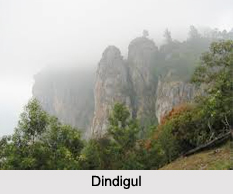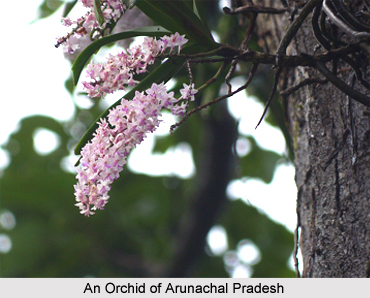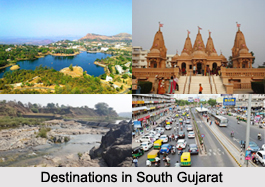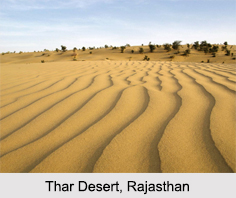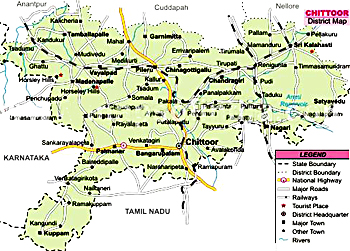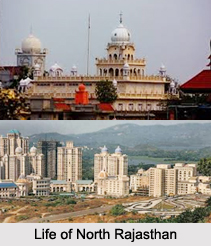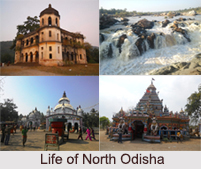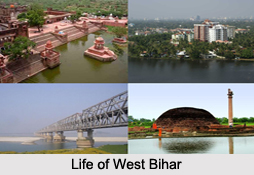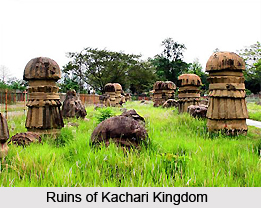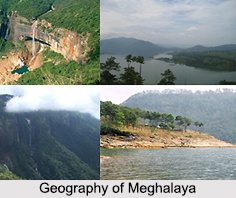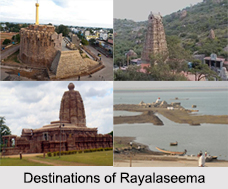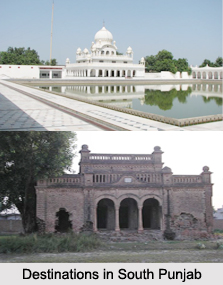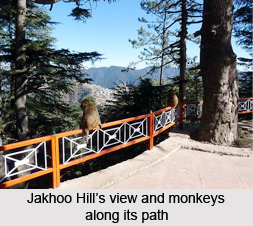 Jakhoo Hill is the highest point in the famous city of Shimla, in Himachal Pradesh state. It is mainly known for the ancient temple devoted to Lord Hanuman that it houses atop, along with the recently unveiled statue of Lord Hanuman, standing high at 108 feet (33 metres) as one of the tallest statues of the country and the world.
Jakhoo Hill is the highest point in the famous city of Shimla, in Himachal Pradesh state. It is mainly known for the ancient temple devoted to Lord Hanuman that it houses atop, along with the recently unveiled statue of Lord Hanuman, standing high at 108 feet (33 metres) as one of the tallest statues of the country and the world.
Location and Altitude of Jakhoo Hill, Shimla
Jakhoo Hill is situated 2.5 kilometres (1.3 miles) east from the Ridge road in Shimla. The summit of Jakhoo Hill is at an elevation of 2,455 metres (8,000 feet) above sea level, the highest peak of Shimla overlooking the city giving it a picturesque and striking look, while also offering a panorama of the Shivalik Ranges and the Sanjauli town. The summit is more than 200 metres higher than the central Ridge road of Shimla and the route to it is 2.5 kilometres ascent from the Ridge (path behind the Christ Church near the Mall Road), with long sections of footsteps, taking nearly 30 minutes to reach on foot. Pony and taxi rides can also be availed for scaling the summit.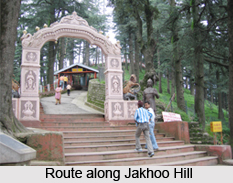
Attractions of Jakhoo Hill, Shimla
The Jakhoo Hill in Shimla is the favourite escape for visitors looking for peace and serenity, away from the city far below. The Jakhoo Hill is covered with Alpine trees and its main attractions are the colourful Jakhoo Temple dedicated to Lord Hanuman and the tall statue of Hanuman, standing at the highest altitude of approximately 8500 feet (2600 metres) above sea level.
Legend behind the Jakhoo Temple, Jakhoo Hill, Shimla
The legend behind the Jakhoo Temple and Jakhoo Hill says that Lord Hanuman, while returning to place the mountain he uprooted when he could not identify the "Sanjeevani booti", the herb which would revive Lakshmana who was injured in battle in the epic Ramayana, took rest upon a hill, the top of which got flattened by the Lord"s weight.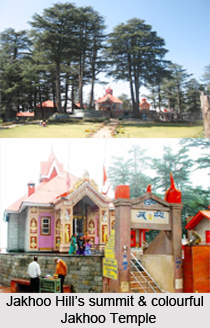 This hill came to be known as Jakhoo Hill, and the Jakhoo temple was established on the very spot atop the hill which supposedly had a giant footprint of Lord Hanuman. The temple has since then become a highly revered religious place in Shimla, where many Hindu devotees throng to offer prayer and worship to their deity Lord Hanuman, whose statue is housed inside.
This hill came to be known as Jakhoo Hill, and the Jakhoo temple was established on the very spot atop the hill which supposedly had a giant footprint of Lord Hanuman. The temple has since then become a highly revered religious place in Shimla, where many Hindu devotees throng to offer prayer and worship to their deity Lord Hanuman, whose statue is housed inside.
The hill and its temple being closely related to Lord Hanuman who is known as the Monkey God, has numerous monkeys hopping in and across the region. They are troublesome and always looking to rob the visitors of their food and belongings, thus, signs advise visitors of being careful of their personal belongings from the monkeys while en route and on arrival at the temple.
The temple itself is colourfully embellished, and to the outer wall is a religious bell which is considered lucky for those who gong it. The temple site has also been improved over the years, with several eateries, canopies and a park with some special arrangements for children.
The wide and flat summit of Jakhoo Hill has a number of tall pine trees which add to the tranquillity of the cool atmosphere. The hilltop lends a spectacular visual of the Shivalik mountains of Himalayan foothills to the north, and the city of Shimla to the west.
The gigantic Hanuman Statue at Jakhoo Hill, Shimla
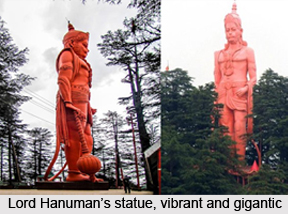 On the outskirts of Shimla, the erstwhile summer capital of the British Raj, a gigantic statue of Lord Hanuman was unveiled in the year 2010, at the Jakhoo Temple on the Jakhoo Hill. The statue stands next to the temple, overlooking the entire city and visible from far off towering the natural greenery of pine tree canopies. Striking and splendid, it is painted in vibrant orange and stands tall at a height of about 108 feet (33 metres). This makes it one of the tallest statues of Lord Hanuman in India as well as one of the tallest statues in the world. The distinct aspect of this statue is that it stands at the highest altitude of over 8100 feet (2500 metres) above sea level, at a higher altitude than those of all other statues of the world, surpassing the statue of `Christ the Redeemer`, which stands 98 feet (30 metres) tall at an altitude of 2296 feet (700 metres) above mean sea level, in Rio de Janeiro, Brazil. This titanic statue of Lord Hanuman was constructed at a cost of 1.5 Crores Indian Rupees. Given the sheer size of this statue of the Monkey God present, it would not be inappropriate to infer that monkeys will be omnipresent in this famous tourist destination that already has a widespread population of monkeys.
On the outskirts of Shimla, the erstwhile summer capital of the British Raj, a gigantic statue of Lord Hanuman was unveiled in the year 2010, at the Jakhoo Temple on the Jakhoo Hill. The statue stands next to the temple, overlooking the entire city and visible from far off towering the natural greenery of pine tree canopies. Striking and splendid, it is painted in vibrant orange and stands tall at a height of about 108 feet (33 metres). This makes it one of the tallest statues of Lord Hanuman in India as well as one of the tallest statues in the world. The distinct aspect of this statue is that it stands at the highest altitude of over 8100 feet (2500 metres) above sea level, at a higher altitude than those of all other statues of the world, surpassing the statue of `Christ the Redeemer`, which stands 98 feet (30 metres) tall at an altitude of 2296 feet (700 metres) above mean sea level, in Rio de Janeiro, Brazil. This titanic statue of Lord Hanuman was constructed at a cost of 1.5 Crores Indian Rupees. Given the sheer size of this statue of the Monkey God present, it would not be inappropriate to infer that monkeys will be omnipresent in this famous tourist destination that already has a widespread population of monkeys.







